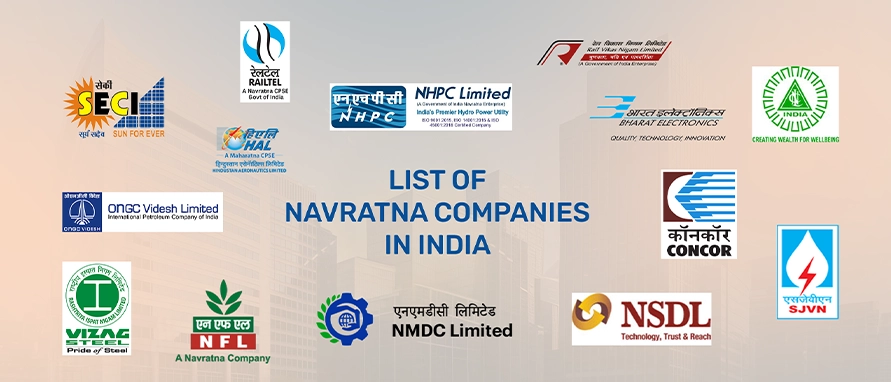-
Our ProductsLoansCardsInsuranceInvestmentsStock MarketElectronics MallCIBIL ScoreKnowledge CentreAcademyCalculators
- Our Services
- My Account
- Discover
What is the Difference Between Standalone and Consolidated Financial Statements
When analysing a company’s financial health, investors often encounter two types of reports — standalone and consolidated financial statements. Though both reflect the financial status of a business, they differ in scope and coverage. Knowing the distinction between the two is essential for accurate interpretation of a company’s earnings, liabilities, and overall financial stability. This article explains the key differences, use cases, and relevance of each type of financial reporting.
What Are Standalone Financial Statements
Standalone financial statements present the financial performance and position of a single legal entity — the parent company — without including its subsidiaries or associate companies. These statements capture only the assets, liabilities, income, and expenses that pertain to the standalone operations of the company.
They include:
Standalone balance sheet
Standalone profit and loss statement
Standalone cash flow statement
Notes to accounts
These statements are useful for understanding the company’s individual performance and for statutory reporting.
What Are Consolidated Financial Statements
Consolidated financial statements (CFS) combine the financials of the parent company and all its subsidiaries, treating them as a single economic entity. This form of reporting eliminates intercompany transactions and reflects the actual financial condition and performance of the entire corporate group.
These statements typically include:
Consolidated balance sheet
Consolidated profit and loss account
Consolidated cash flow statement
Notes to accounts and details on non-controlling interest
CFS gives stakeholders a holistic view of the group's overall financial health.
Key Differences Between Standalone and Consolidated Statements
The table below outlines the primary differences across major parameters:
| Aspect | Standalone Financial Statements | Consolidated Financial Statements |
|---|---|---|
| Scope |
Only the parent company |
Parent company + subsidiaries |
| Intercompany transactions |
Included |
Eliminated |
| Reflection of group strength |
Limited |
Comprehensive |
| Required for listed companies |
Mandatory |
Mandatory if subsidiaries exist |
| Usefulness |
Assess individual entity performance |
Assess overall group performance |
| Minority interest disclosed |
Not applicable |
Included |
Understanding these differences helps in interpreting a company’s performance more accurately based on the user’s information needs.
When Are These Reports Used
Different stakeholders rely on each type of report for specific insights:
Standalone statements are primarily used by statutory bodies, auditors, and internal management for regulatory or operational assessment.
Consolidated statements are useful for investors, credit rating agencies, and financial analysts to understand the overall financial health of the business group.
Relative Relevance for Investors
While standalone results show how the parent company is performing on its own, they may not offer a complete picture, especially if the company earns a significant portion of revenue from its subsidiaries.
Consolidated financials are generally regarded as more reflective of the group’s overall position because:
They reflect the actual scale and performance of the entire business.
Intercompany revenues or debts are eliminated, avoiding double counting.
They include profits/losses from subsidiaries and associated risks.
Both sets are often reviewed to understand performance at different levels.
Why Do Companies Report Both
Companies, especially those that are publicly listed, are required by regulators to publish both standalone and consolidated financial statements. The dual reporting helps:
Satisfy statutory compliance
Maintain transparency
Enable comparison of individual vs. group performance
This practice allows stakeholders to evaluate the core operations as well as the extended impact of subsidiaries.
Impact on Financial Ratios
Depending on the statement type used, financial ratios may vary:
Debt-to-equity ratio could appear lower in standalone results if most debt is taken by subsidiaries.
Return on equity (ROE) might be higher in standalone statements due to lower equity base.
Profit margins could differ based on the contribution of subsidiaries in the consolidated books.
It is important for analysts to choose the appropriate set of financials depending on what they intend to evaluate.
Conclusion
Both standalone and consolidated financial statements serve distinct but complementary purposes. While standalone reports provide insight into the core company’s performance, consolidated financials offer a broader perspective of the group’s financial health. For investors and analysts, understanding the difference is essential to make informed decisions based on the right context.
Disclaimer
This content is for informational purposes only and the same should not be construed as investment advice. Bajaj Finserv Direct Limited shall not be liable or responsible for any investment decision that you may take based on this content.
FAQs
What is the main difference between standalone and consolidated financial statements?
Standalone financial statements present only the financial performance and position of the parent company, whereas consolidated financial statements include the combined results of the parent company along with all its subsidiaries.
Why do companies prepare consolidated financial statements?
Companies prepare consolidated financial statements to provide a comprehensive view of the financial health and performance of the entire group, capturing both the parent company and its subsidiaries together.
Can a company show profit in standalone and loss in consolidated statements?
A company can report profit in standalone financial statements and a loss in consolidated financial statements if the parent company performs well but its subsidiaries register losses that outweigh the parent’s profits.
Are both standalone and consolidated reports mandatory?
For listed companies in India, both standalone and consolidated financial statements are generally mandatory as per regulatory requirements to ensure transparency for investors and stakeholders.
Which financial report is considered more comprehensive?
Consolidated statements are typically considered more reflective of overall group performance, though standalone results still provide insight into the parent company’s core operations.
With a Postgraduate degree in Global Financial Markets from the Bombay Stock Exchange Institute, Nupur has over 8 years of experience in the financial markets, specializing in investments, stock market operations, and project management. She has contributed to process improvements, cross-functional initiatives & content development across investment products. She bridges investment strategy with execution, blending content insight, operational efficiency, and collaborative execution to deliver impactful outcomes.
Related Blogs

Nupur Wankhede

Anshika

Geetanjali Lachke

Roshani Ballal

Roshani Ballal

Anshika

Anshika

Anshika

Nupur Wankhede

Nupur Wankhede

Geetanjali Lachke

Roshani Ballal

Roshani Ballal

Geetanjali Lachke

Geetanjali Lachke

Nupur Wankhede

Anshika

Nupur Wankhede

Nupur Wankhede

Nupur Wankhede

Nupur Wankhede

Nupur Wankhede

Nupur Wankhede

Nupur Wankhede

Geetanjali Lachke

Geetanjali Lachke

Roshani Ballal

Nupur Wankhede

Anshika

Anshika

Nupur Wankhede

Nupur Wankhede

Nupur Wankhede

Nupur Wankhede

Nupur Wankhede

Nupur Wankhede

Nupur Wankhede

Nupur Wankhede

Nupur Wankhede

Nupur Wankhede

Nupur Wankhede

Nupur Wankhede

Roshani Ballal

Anshika

Nupur Wankhede

Geetanjali Lachke

Nupur Wankhede

Nupur Wankhede

Anshika

Anshika

Nupur Wankhede

Anshika

Anshika

Nupur Wankhede
.webp)
Nupur Wankhede

Nupur Wankhede

Nupur Wankhede

Nupur Wankhede

Nupur Wankhede

Nupur Wankhede
.webp)
Nupur Wankhede

Nupur Wankhede

Nupur Wankhede

Nupur Wankhede
-in-India.webp)
Nupur Wankhede

Nupur Wankhede

Nupur Wankhede

Anshika

Nupur Wankhede

Nupur Wankhede

Anshika

Anshika

Nupur Wankhede

Nupur Wankhede

Nupur Wankhede

Nupur Wankhede

Nupur Wankhede

Nupur Wankhede

Nupur Wankhede

Nupur Wankhede

Anshika

Nupur Wankhede

Nupur Wankhede

Nupur Wankhede

Nupur Wankhede

Anshika

Nupur Wankhede

Nupur Wankhede
-Meaning-Importance.webp)
Nupur Wankhede

Anshika

Nupur Wankhede

Anshika

Nupur Wankhede

Nupur Wankhede

Nupur Wankhede

Geetanjali Lachke

Geetanjali Lachke

Geetanjali Lachke

Anshika

Anshika

Nupur Wankhede

Nupur Wankhede
-portfolio.webp)
Nupur Wankhede

Anshika

Roshani Ballal

Geetanjali Lachke

Geetanjali Lachke

Geetanjali Lachke

Geetanjali Lachke

Geetanjali Lachke

Roshani Ballal

Roshani Ballal

Geetanjali Lachke

Geetanjali Lachke

Geetanjali Lachke

Roshani Ballal

Roshani Ballal

Geetanjali Lachke

Roshani Ballal

Roshani Ballal

Roshani Ballal

Roshani Ballal

Roshani Ballal

Roshani Ballal

Roshani Ballal

Roshani Ballal

Roshani Ballal





























































.webp)



.webp)












.webp)




.webp)




































